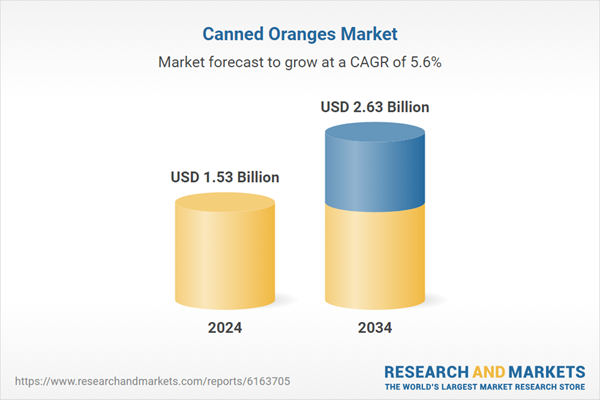For example, certain regions have introduced initiatives like Germany’s Single-Use Plastics Fund Act, which encourages producers to align with sustainability standards by reporting packaging materials used. This kind of regulation is pushing manufacturers across the canned food and beverage industry to reevaluate their packaging strategies. It not only promotes accountability but also incentivizes the transition to recyclable, reusable, and environmentally responsible packaging formats. Such policies are fostering innovation in material science and driving companies to adopt alternatives that minimize ecological impact, such as BPA-free linings, biodegradable polymers, and lightweight metal or glass containers. As more countries adopt similar environmental mandates, sustainable packaging is becoming a key competitive differentiator in global consumer markets.
The canned mandarin oranges segment holds a dominant position in the market, valued at USD 500 million in 2024. This segment is projected to grow at a CAGR of 6.3%. Canned oranges are in high demand due to their ability to provide fresh fruit flavor year-round, ease of use, and long shelf life. The product is favored for its superior taste, natural sweetness, and retention of most nutrients, making it an appealing option for both households and the food service industry. Canned oranges also have versatile applications, including desserts, salads, and beverages. This versatility, combined with their ability to meet quality and stability standards, drives their popularity.
In terms of packaging, metal cans, particularly aluminum and steel, continue to dominate the market share in 2024. These materials are favored for their durability, excellent preservation properties, and recyclability, ensuring that canned oranges remain fresh for extended periods. Additionally, glass jars are sought after for their airtight seals and reusability, particularly appealing to consumers who prioritize sustainability and the ability to view the product. Meanwhile, there has been a rising demand for BPA-free plastic containers and flexible packaging formats like pouches and sachets, which offer convenience, portability, and alignment with health and safety standards.
U.S. Canned Oranges Market was valued at USD 520 million in 2024. The country’s robust citrus production, particularly in Florida and California, ensures a constant supply of raw materials for year-round production. The demand for canned oranges in the U.S. is anticipated to grow significantly, driven by consumer preference for convenient, shelf-stable foods that are perceived as healthy. Additionally, the growing trend toward low-sugar and juice-rich products further boosts the market for canned oranges, aligning with the increased consumer focus on nutritional transparency and healthy eating habits.
The Canned Oranges Market is moderately consolidated, with key players including Dole Food Company, Inc., ConAgra Foods, Inc., Pacific Coast Producers, Seneca Foods Corporation, and Del Monte Foods Company. These companies are strengthening their market presence through product innovation, expanding their distribution channels, and adapting to consumer preferences for healthier and more sustainable products. To strengthen their foothold, companies in the canned oranges market are focusing on innovation, particularly in packaging and product formulations. As sustainability becomes a growing priority, manufacturers are embracing eco-friendly packaging options, such as BPA-free and recyclable materials, which resonate with health-conscious and environmentally aware consumers. Additionally, some companies are enhancing their product offerings by reducing sugar content and providing clean-label products that cater to the rising demand for natural ingredients. Another key strategy involves expanding into emerging markets by leveraging local production and distribution capabilities, allowing businesses to meet the increasing global demand for canned oranges. Manufacturers are also focusing on diversifying their product portfolios to include a variety of canned citrus options, such as mandarin oranges and orange juice concentrate, to cater to a wide range of consumer preferences.
This product will be delivered within 2-4 business days.
Table of Contents
Companies Mentioned
The companies profiled in this Canned Oranges market report include:- ConAgra Foods, Inc.
- Del Monte Foods Company
- Dole Food Company, Inc.
- Fomdas Foods
- Kunyutj
- Pacific Coast Producers
- Roland Food
Table Information
| Report Attribute | Details |
|---|---|
| No. of Pages | 210 |
| Published | July 2025 |
| Forecast Period | 2024 - 2034 |
| Estimated Market Value ( USD | $ 1.53 Billion |
| Forecasted Market Value ( USD | $ 2.63 Billion |
| Compound Annual Growth Rate | 5.6% |
| Regions Covered | Global |
| No. of Companies Mentioned | 8 |









